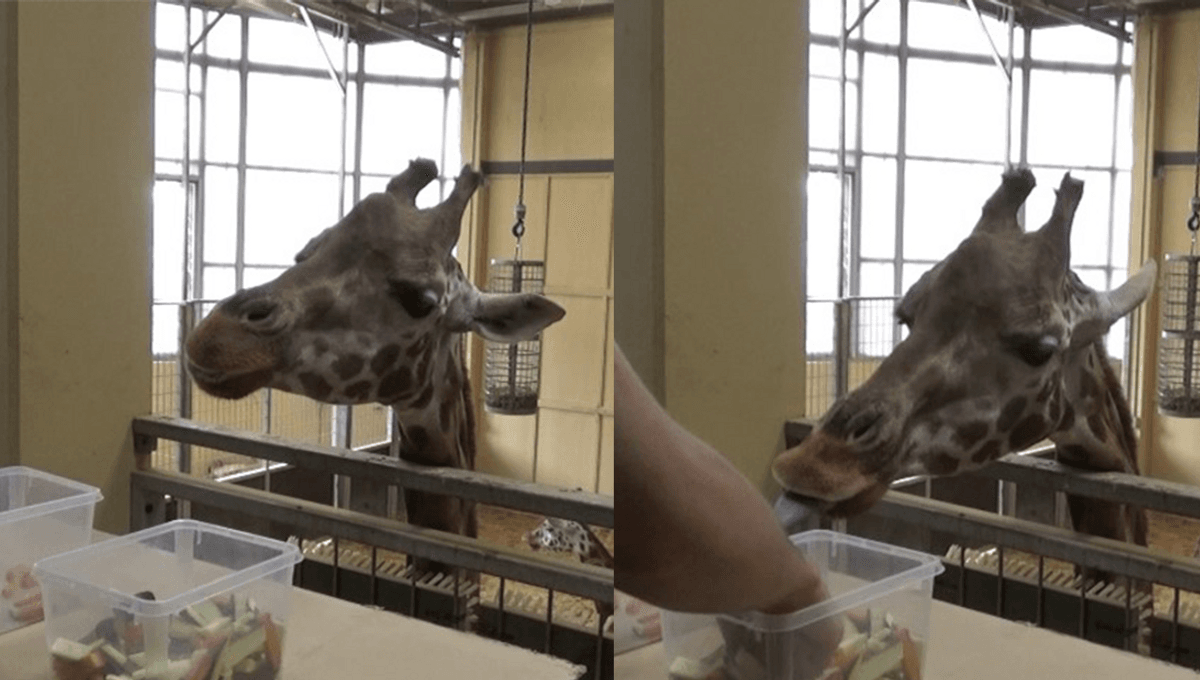
There are a fair few examples in the animal kingdom of species that have mathematical abilities, some fish can count, bees can tell apart odd and even numbers, and now giraffes can make decisions based on statistical information.
Four giraffes (Giraffa camelopardalis) at Barcelona Zoo have taken part in a new study testing whether they can make statistical inferences. This ability is present in animals with large brains when compared to their body size such as primates and parrots and is considered a highly developed cognitive function. Until now, animals with smaller brains, such as these giraffes, have not been tested.
The study set up saw the researchers present the giraffe with two treat options, both hidden from the giraffe in a closed fist. The two treats were taken from transparent boxes which had different proportions of preferred carrots sticks, and less preferred zucchini sticks. All four of the giraffes were able to see into the containers, but could not see which type of food was present in the closed fist of the researcher.
In different conditions, the containers held different proportions of the treats, either containing 20 carrots and 100 zucchini, or 100 carrots and 20 zucchini. The next combination involved 20 carrots and 100 zucchini in one container plus 20 carrots and 4 zucchini in the other. In the final version, 57 carrots and 63 zucchini were seen in one container, and 3 carrots and 63 zucchini in the other container.
In the second half of the experiment, a barrier was inserted into the middle of the containers so the giraffes could only see the top part of the container when choosing which closed fist to pick. This was to test whether the giraffes could use statistical inference and their understanding of physical barriers to select their preferred treat.
The giraffes were able to successfully choose the treat that came from the container with the highest proportion of their favorite snack. The team also discovered that the giraffes were pretty speedy in picking their choice, only requiring 1.2 sessions on average to select the correct container in at least 17 out of the 20 trials. By contrast, keas, a type of parrot species with a much larger brain-to-body ratio, needed 3.9 sessions on average.
Overall, the findings suggest that giraffes are able to demonstrate statistical reasoning capabilities in the same manner as primates and the researchers think that large brains are not a prerequisite for having this highly developed cognitive function and complex statistical skills. Furthermore, they suggest that the ability to make statistical inferences may be more widespread in the animal kingdom than previously thought.
The paper is published in Scientific Reports.
Source Link: Giraffes May Have Smaller Brains But They Can Do Stats Just As Well As Primates